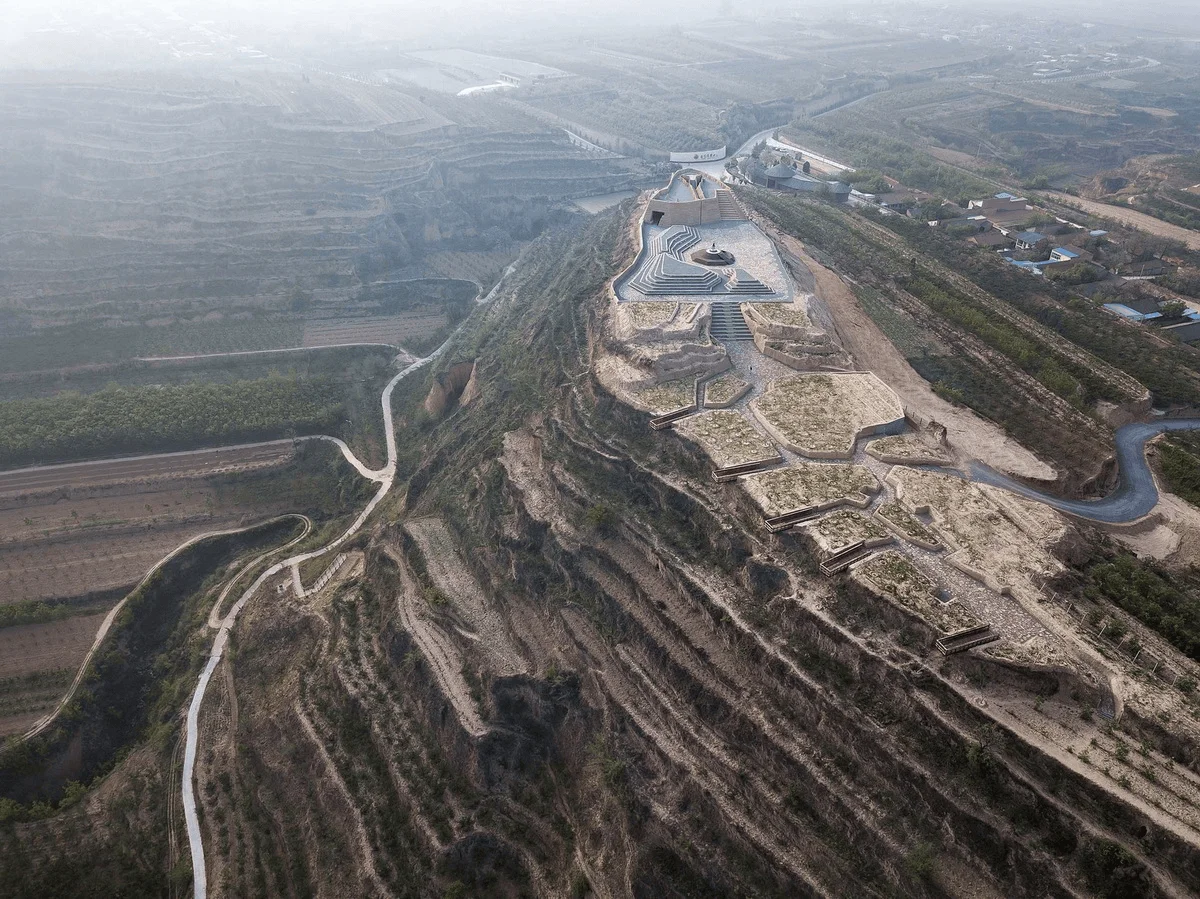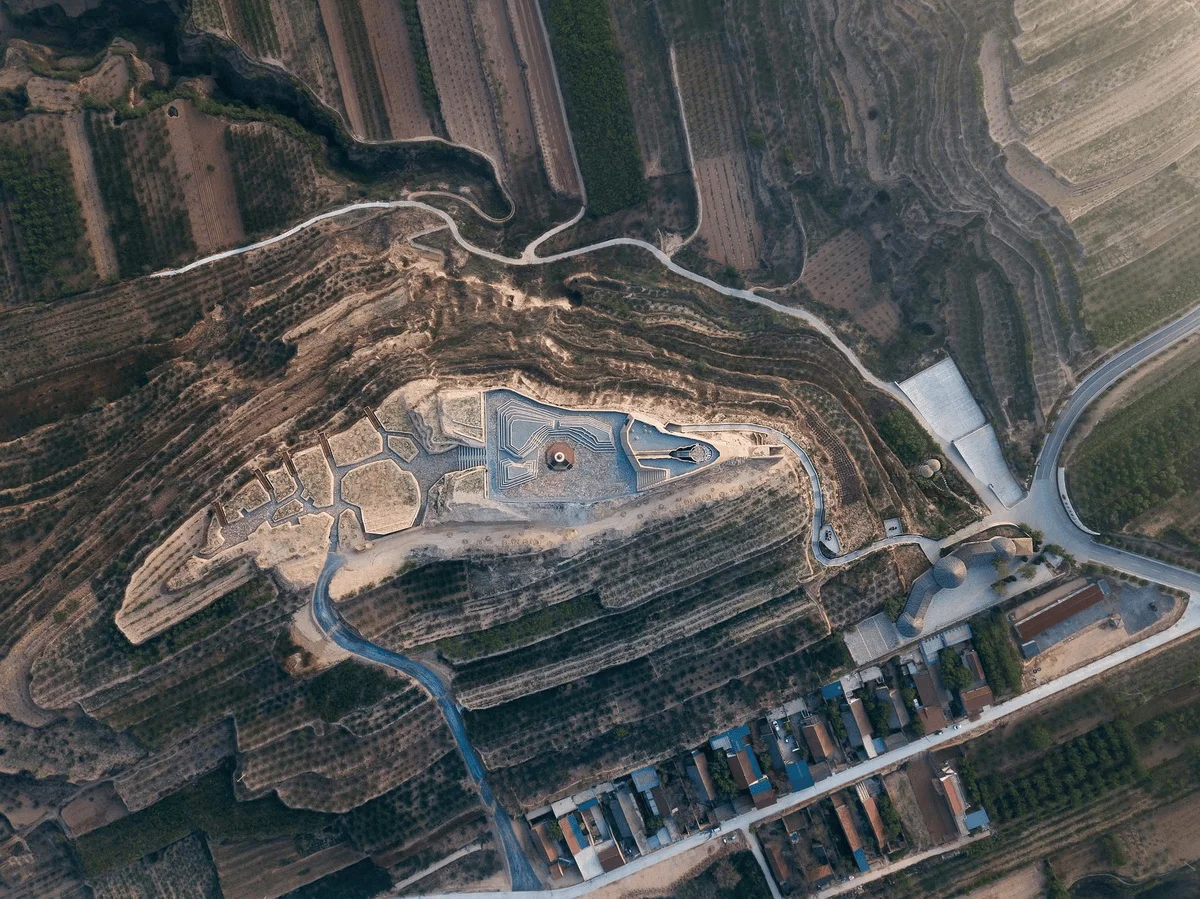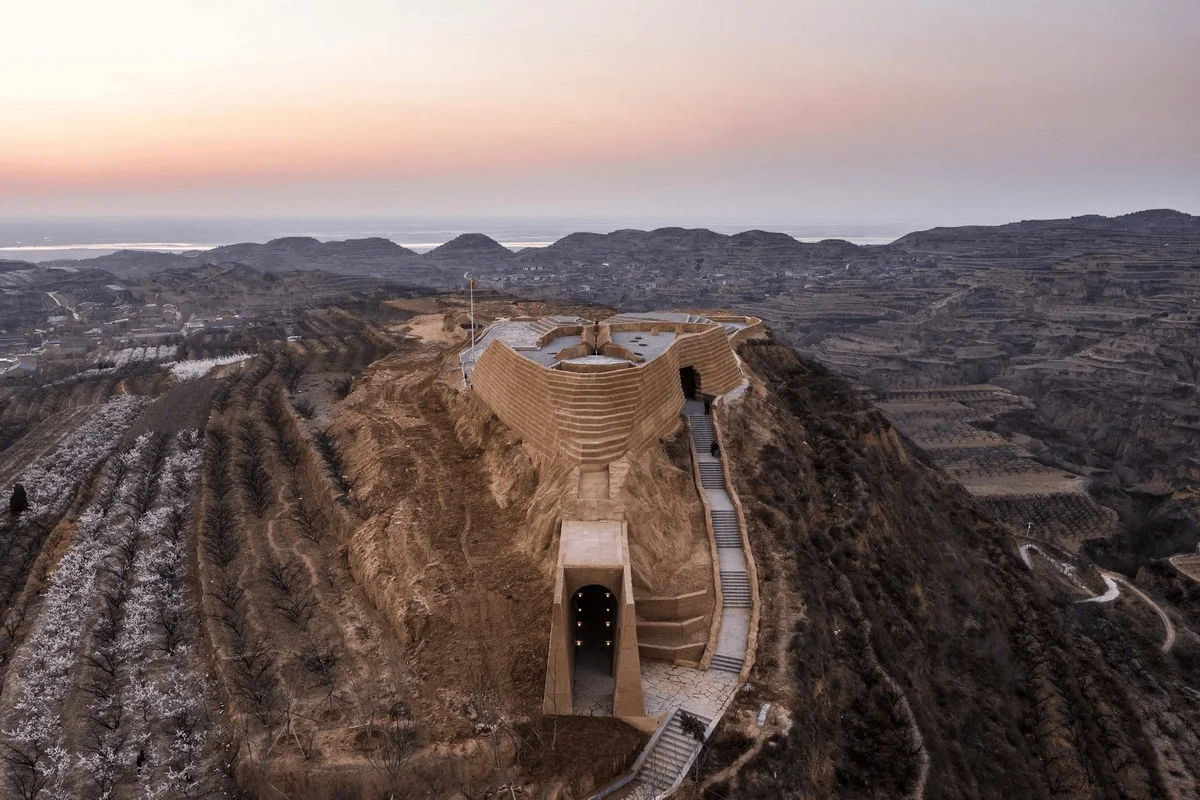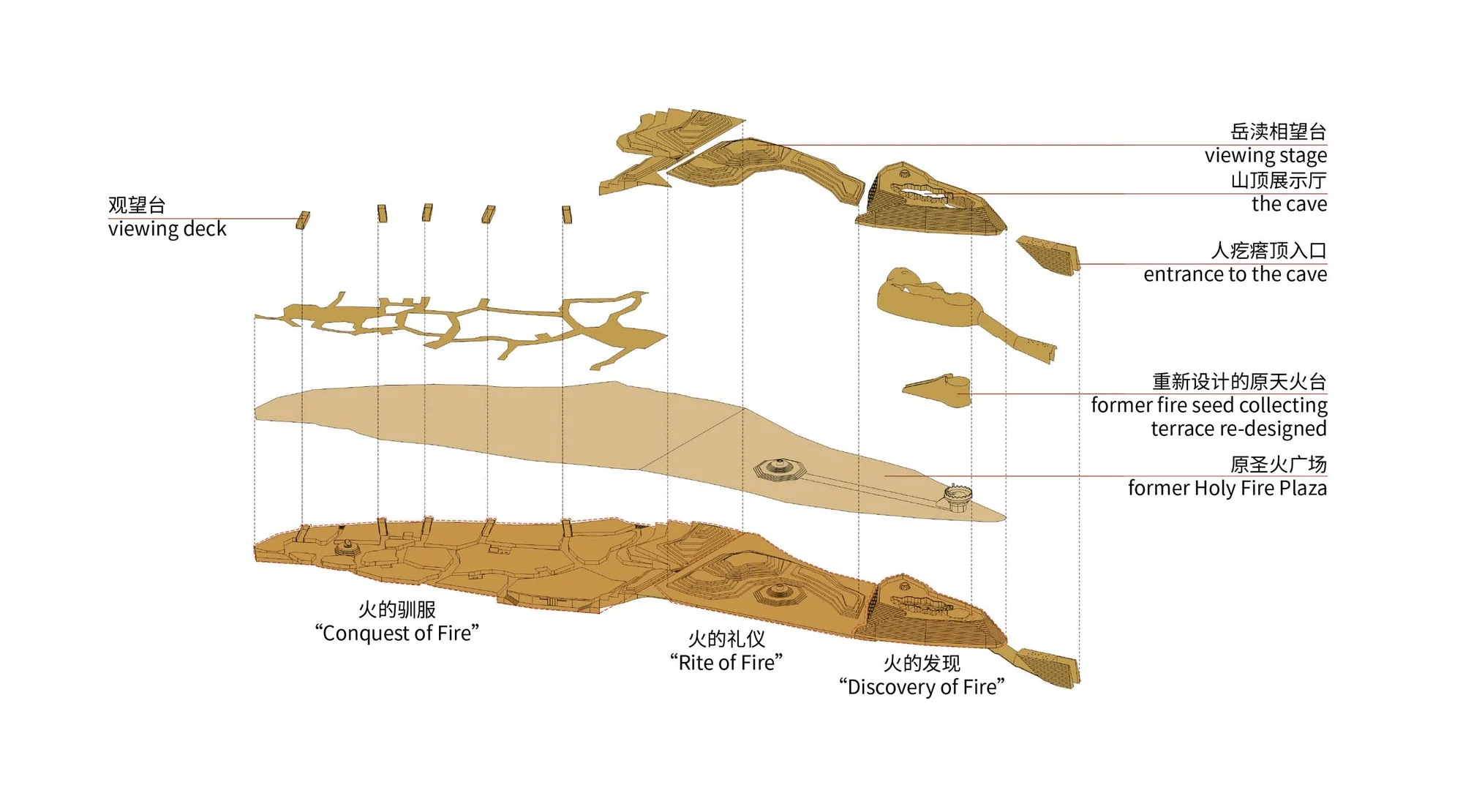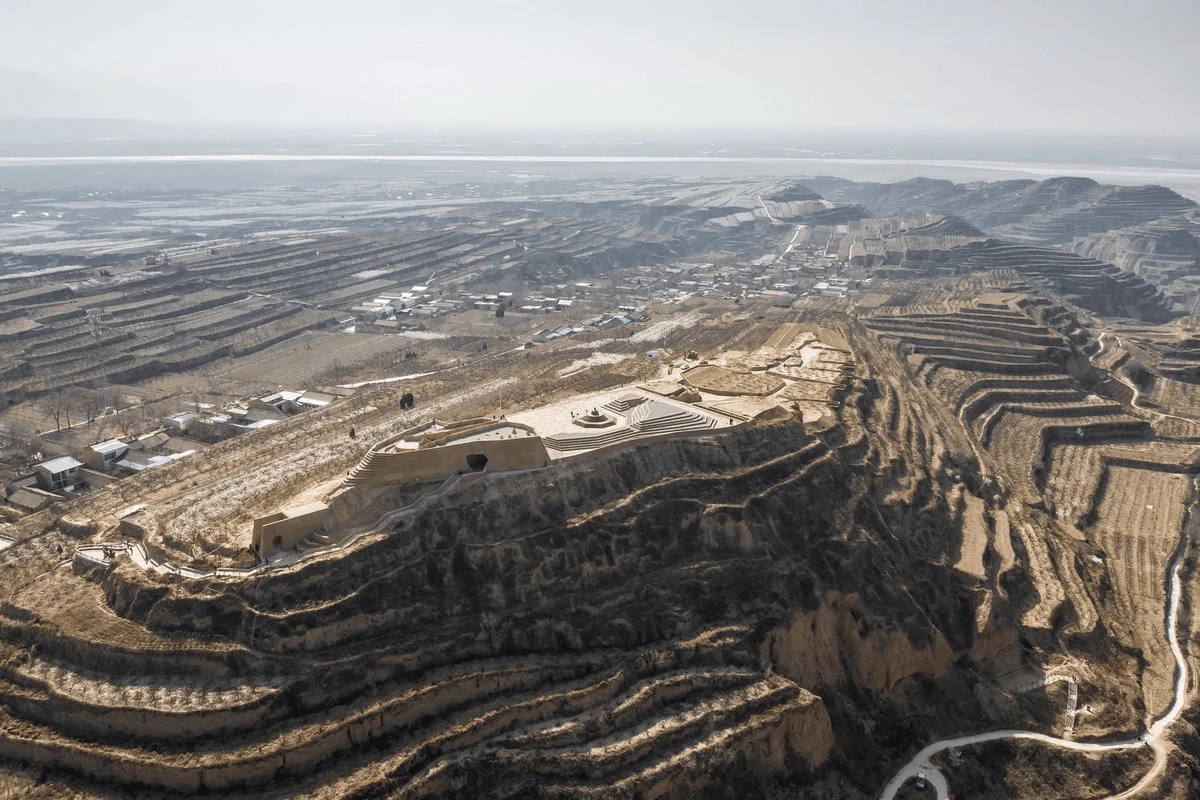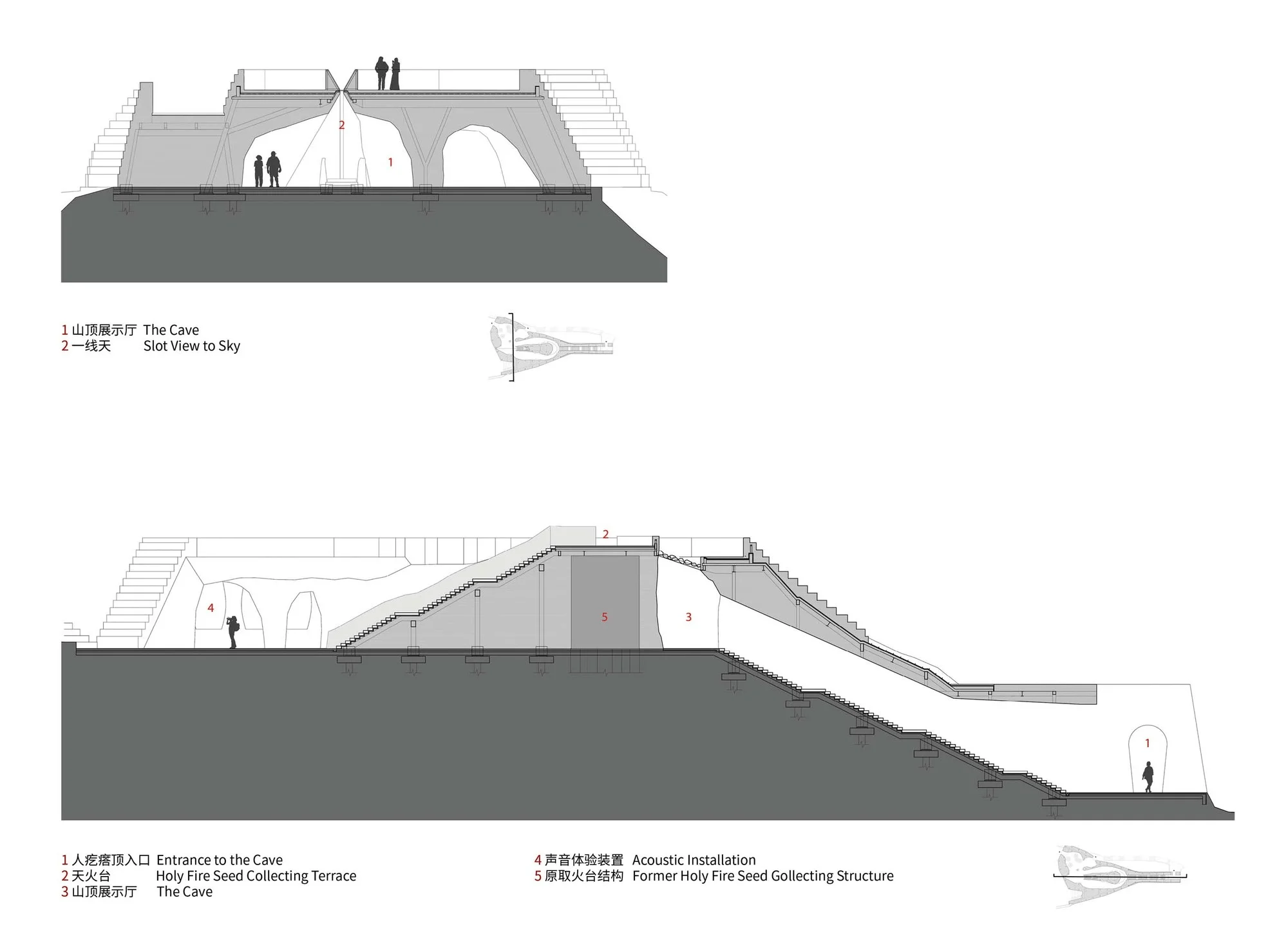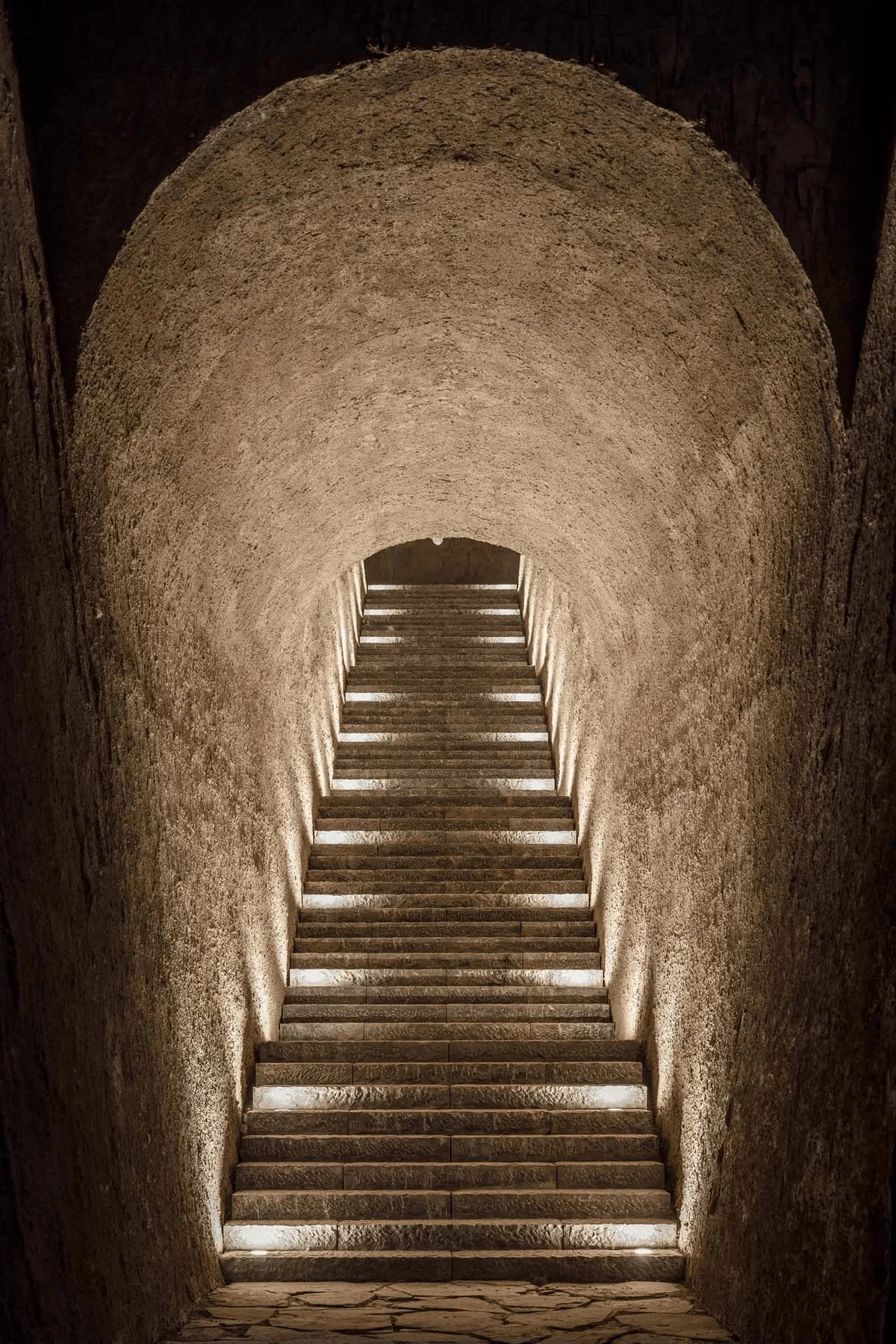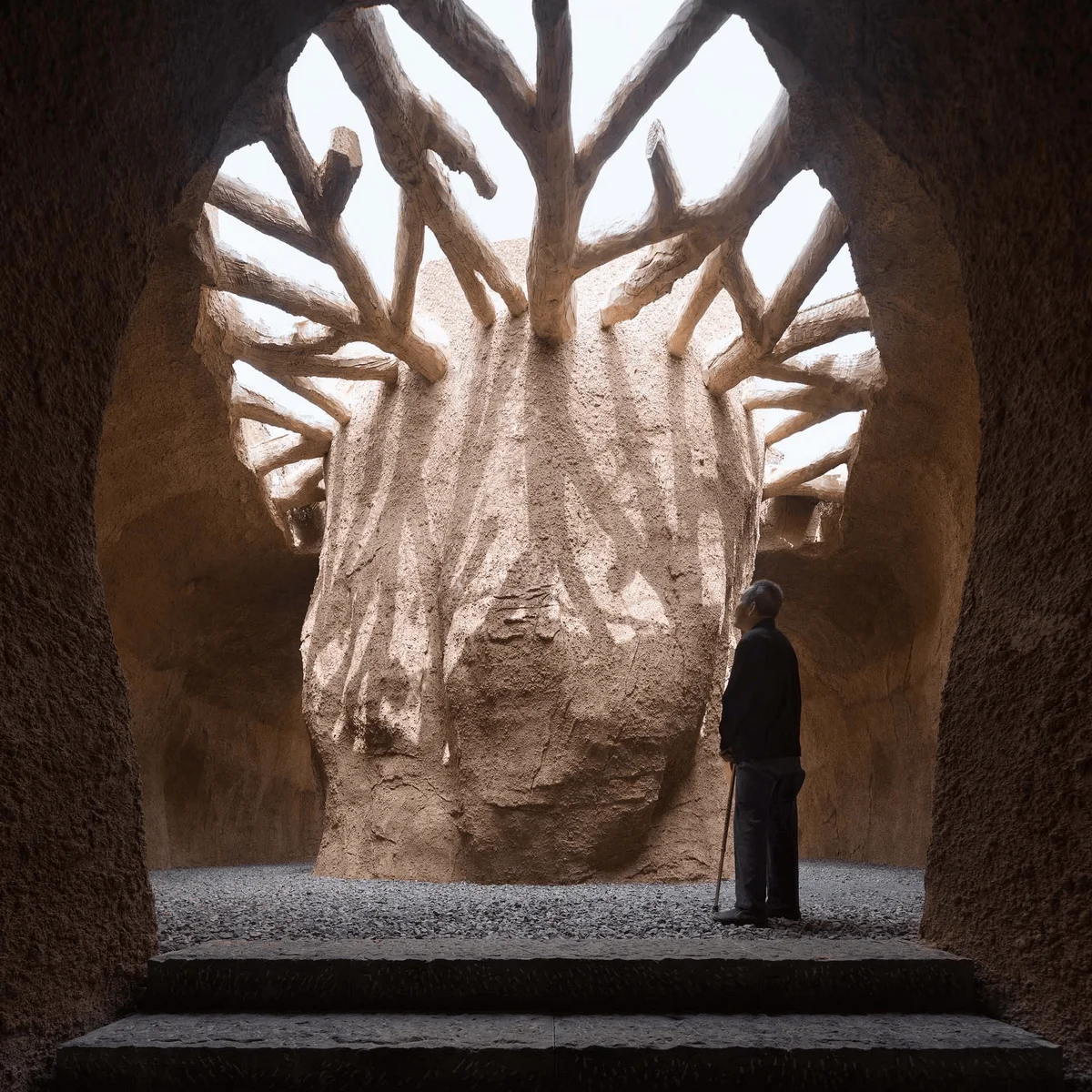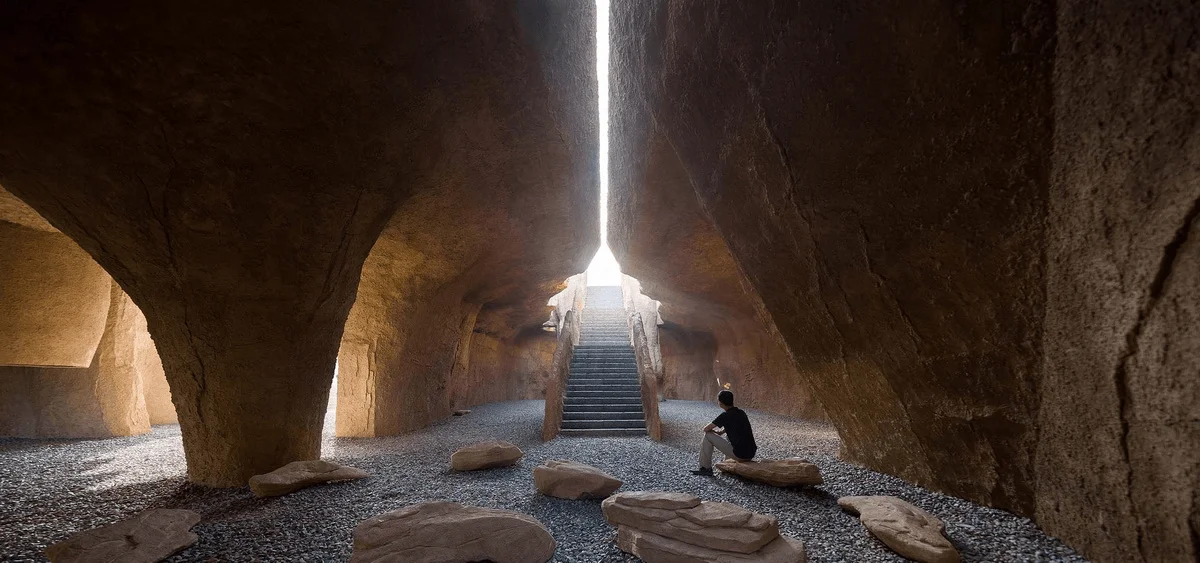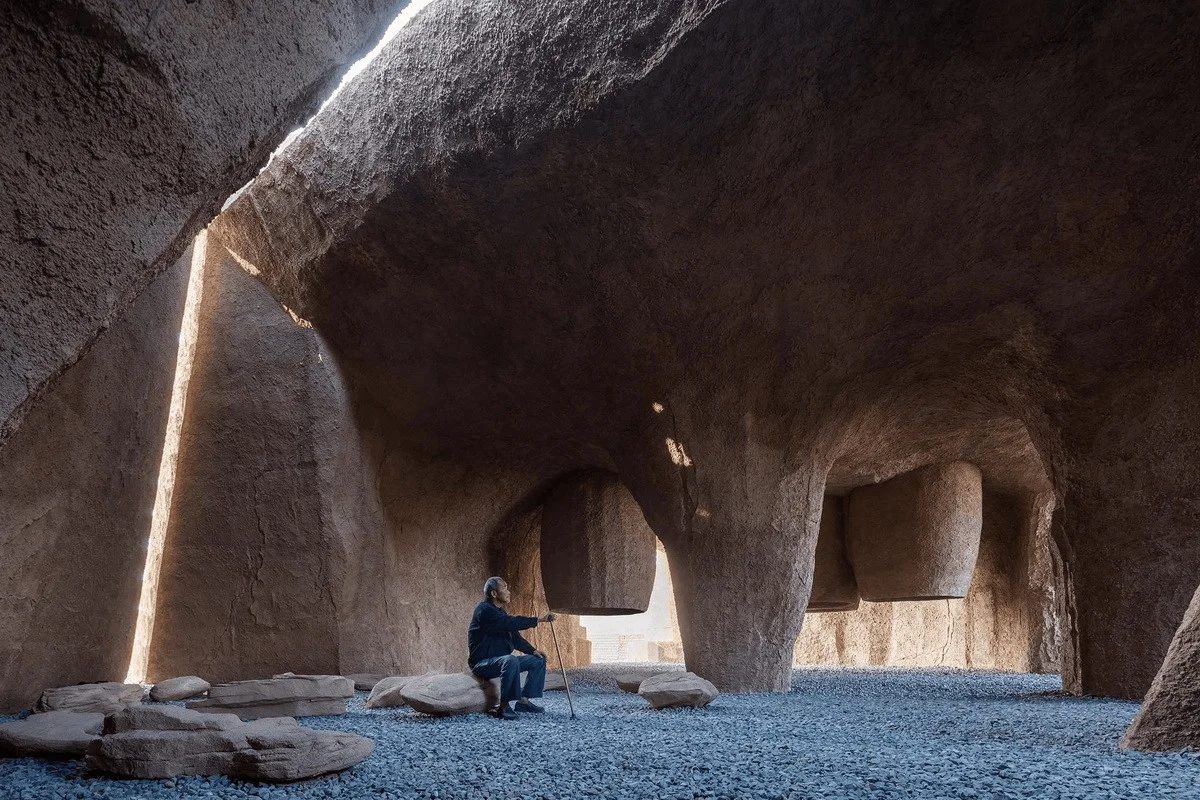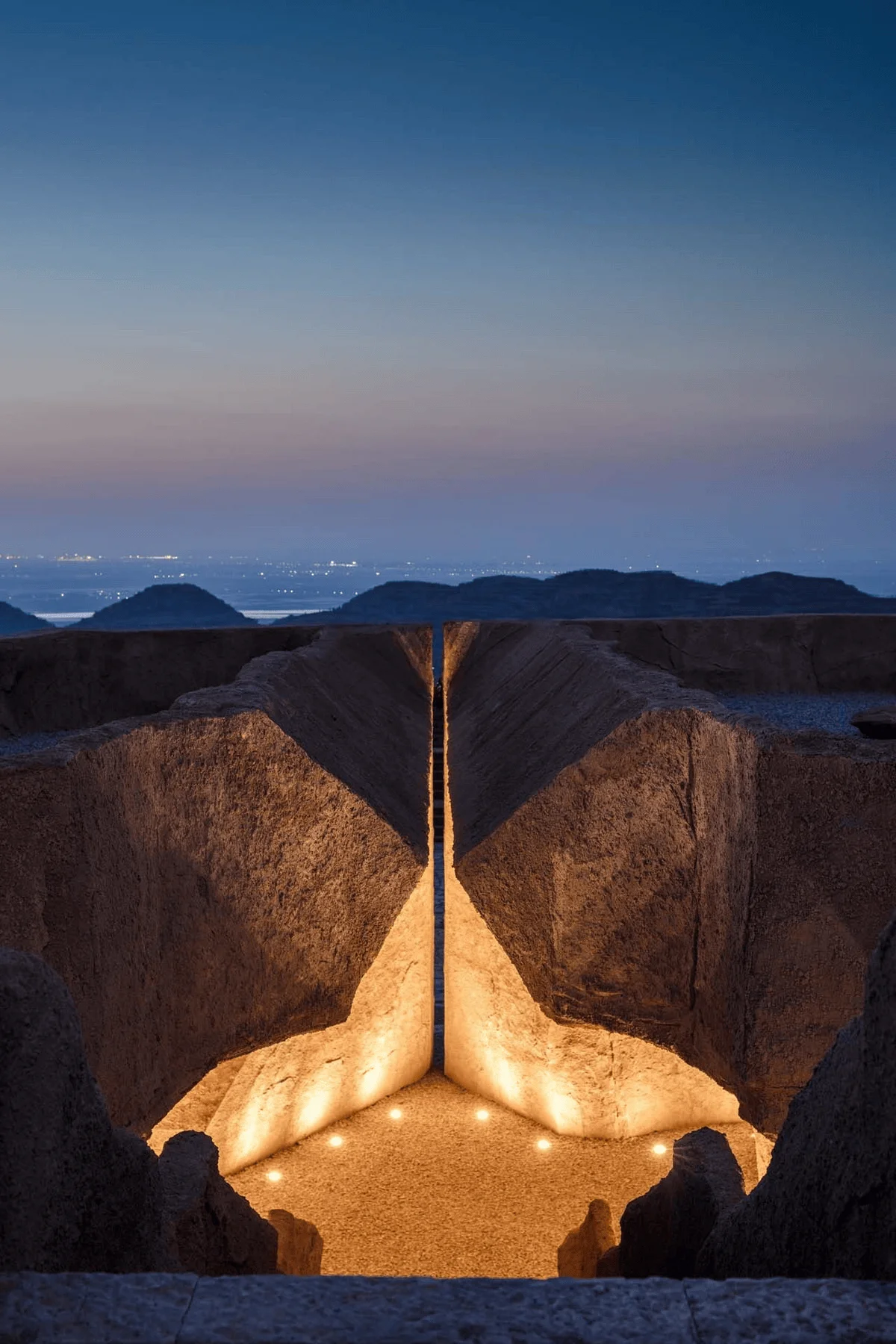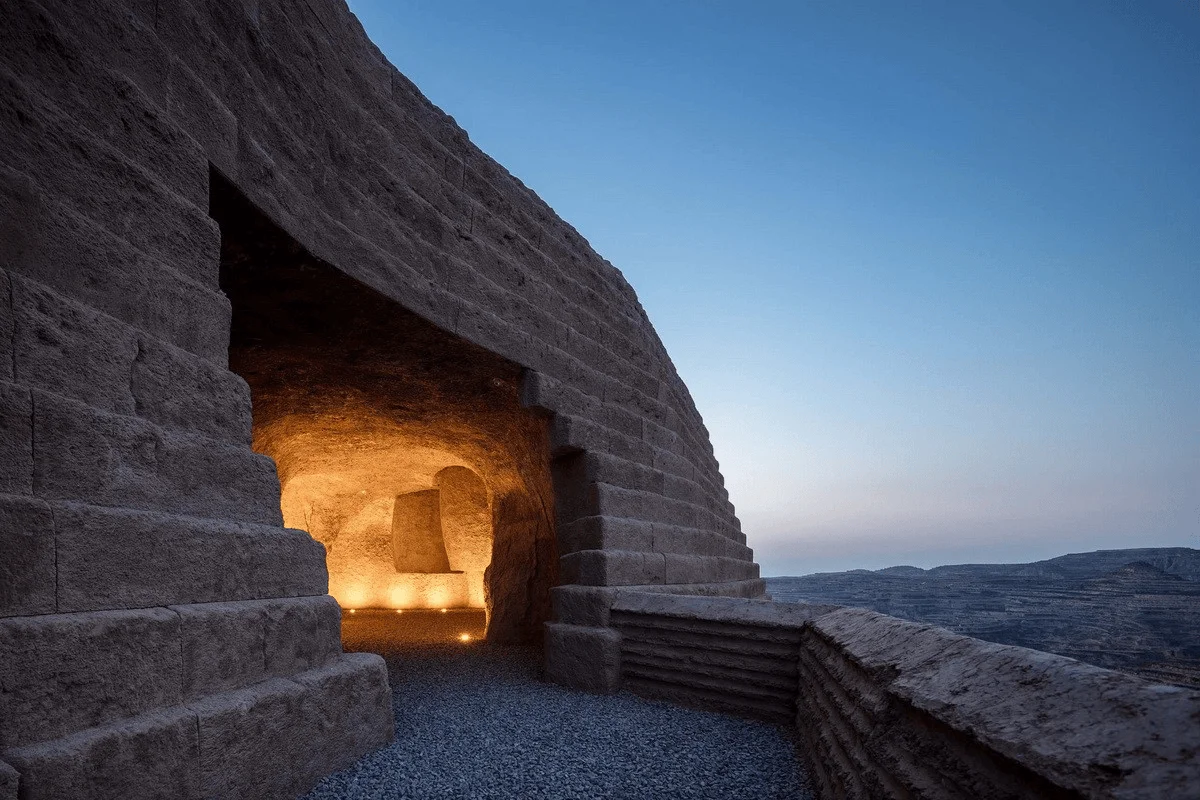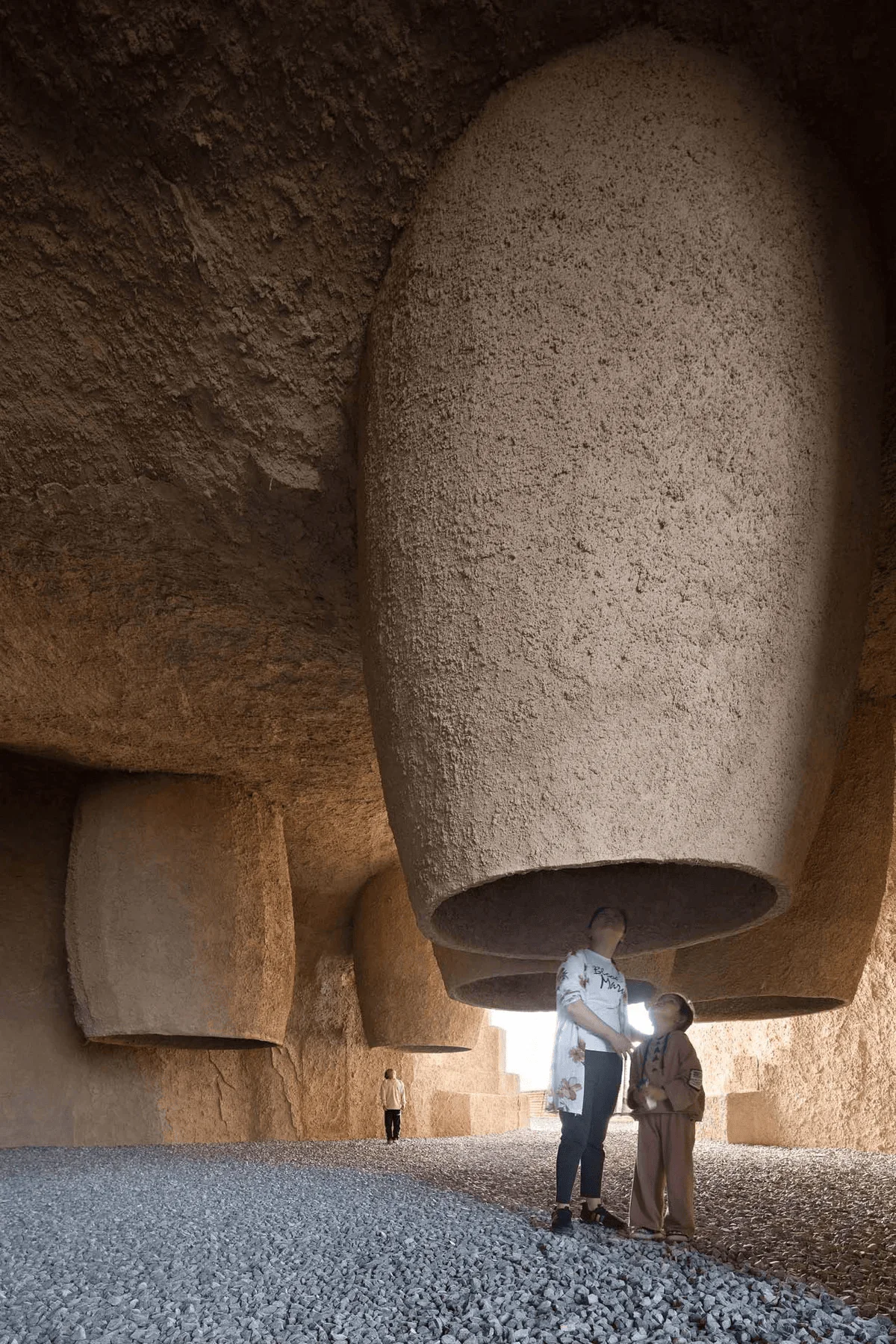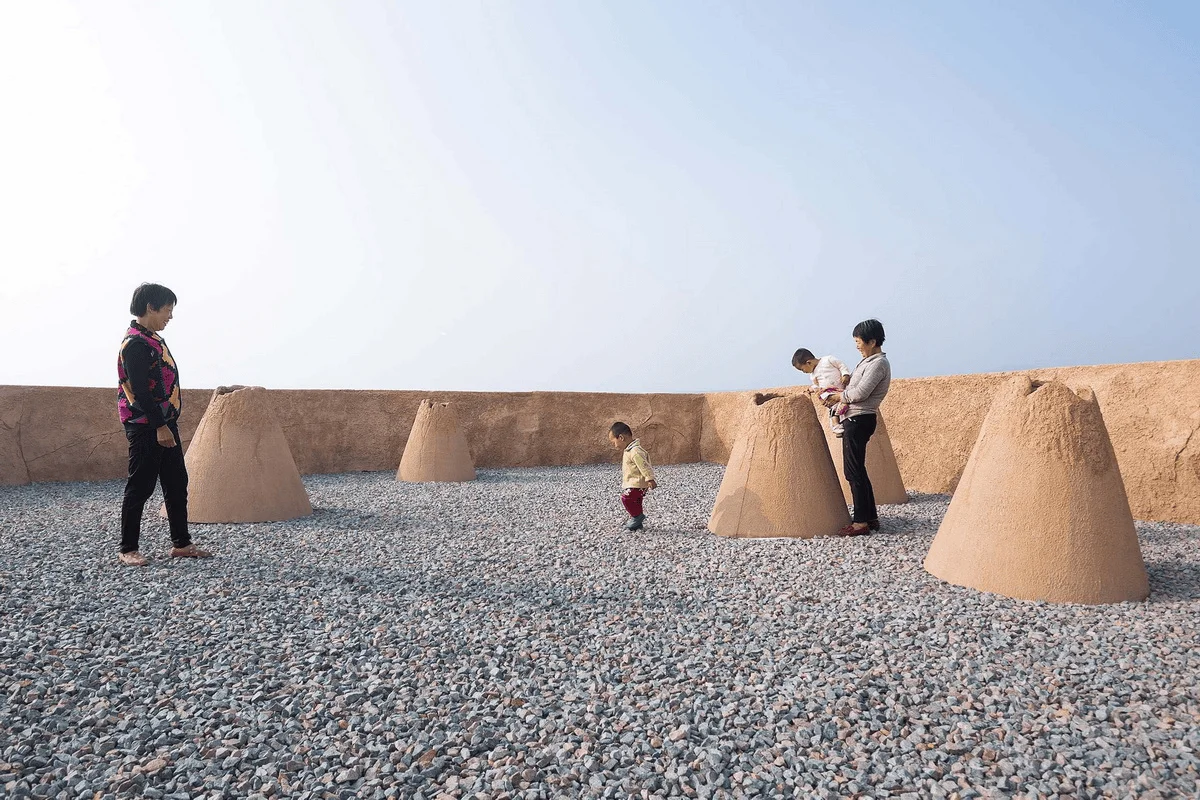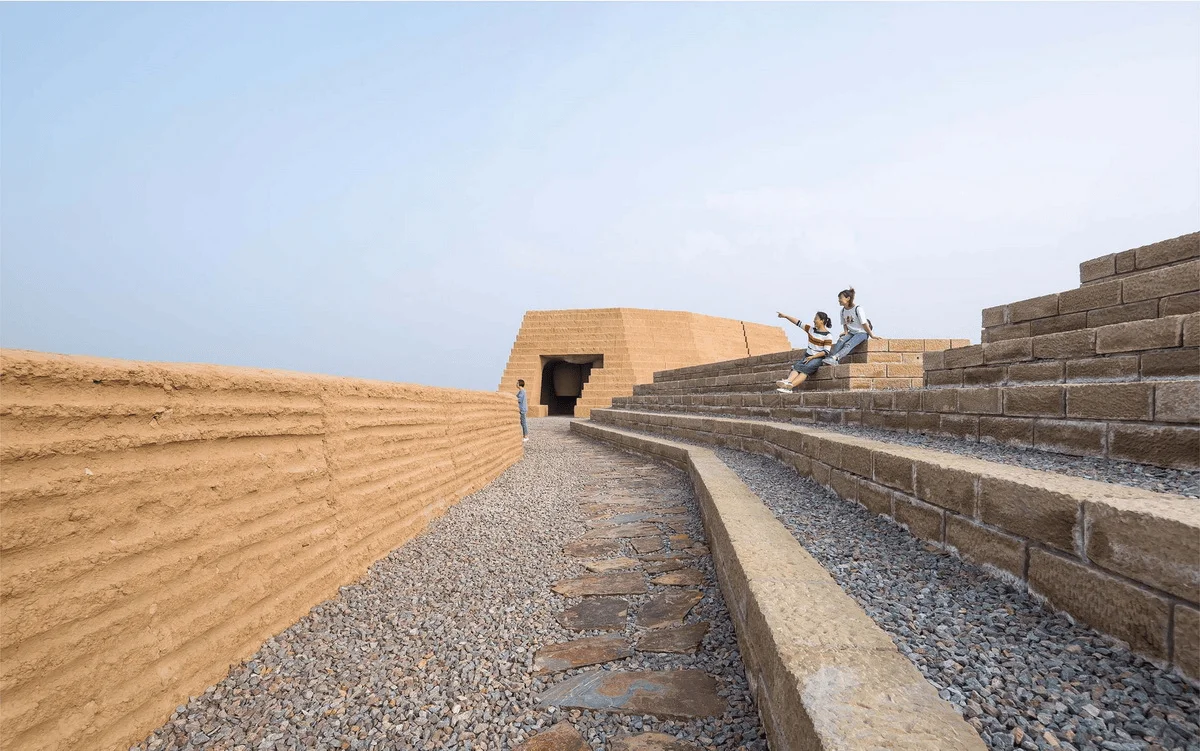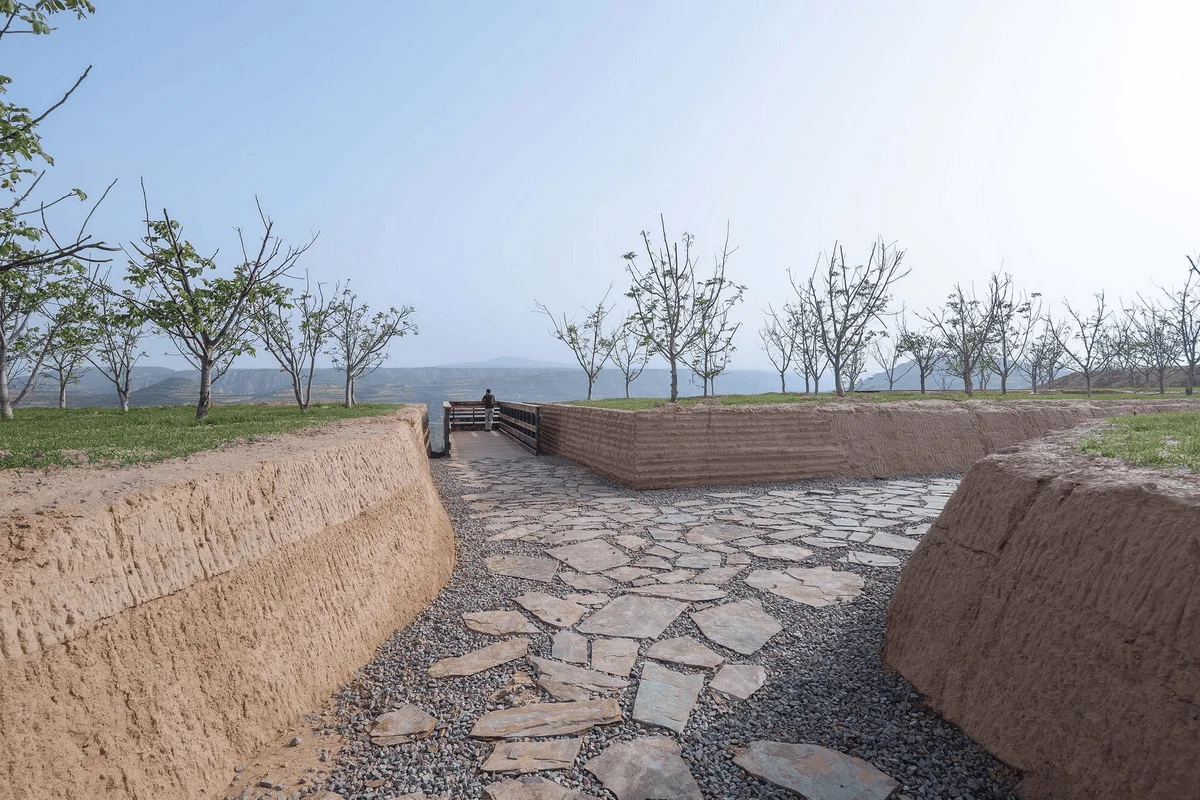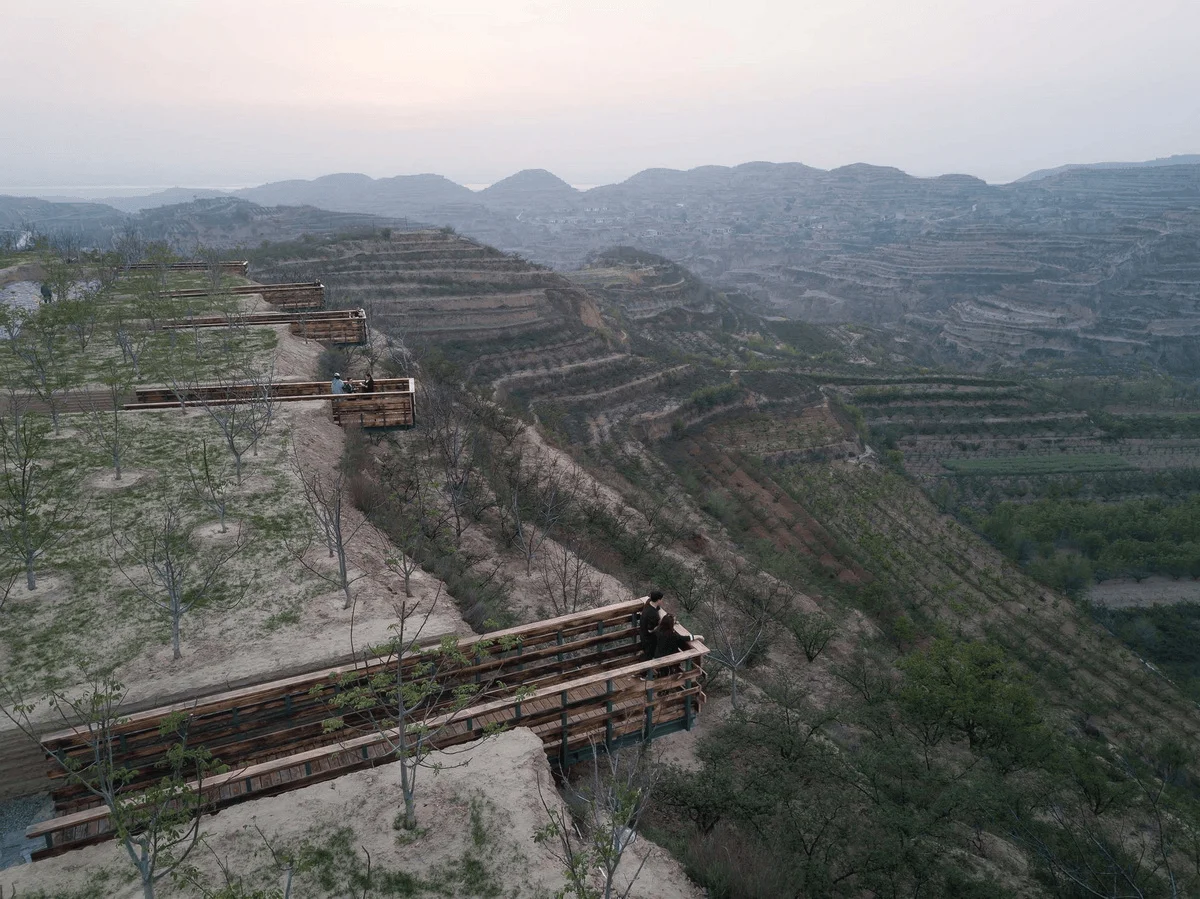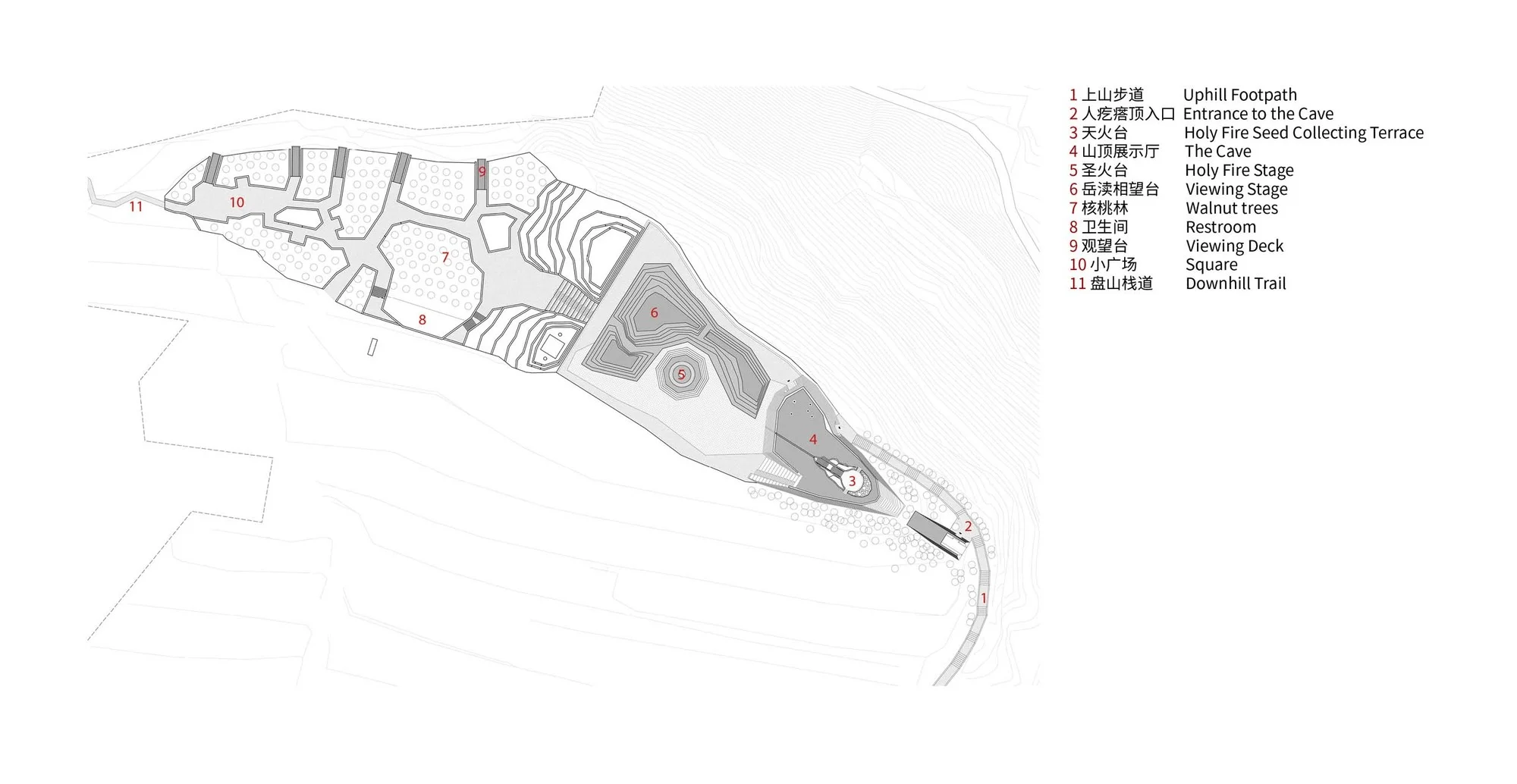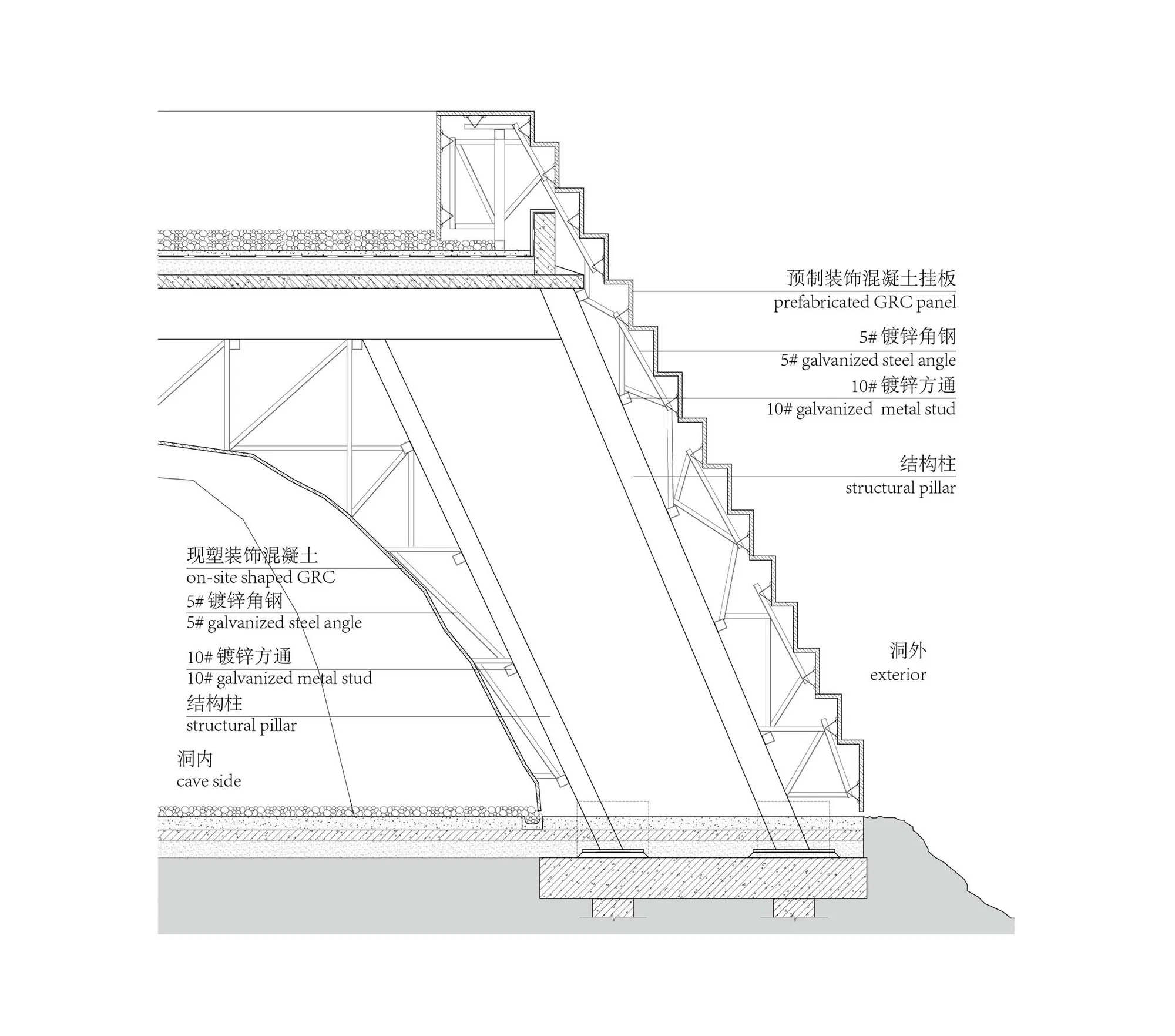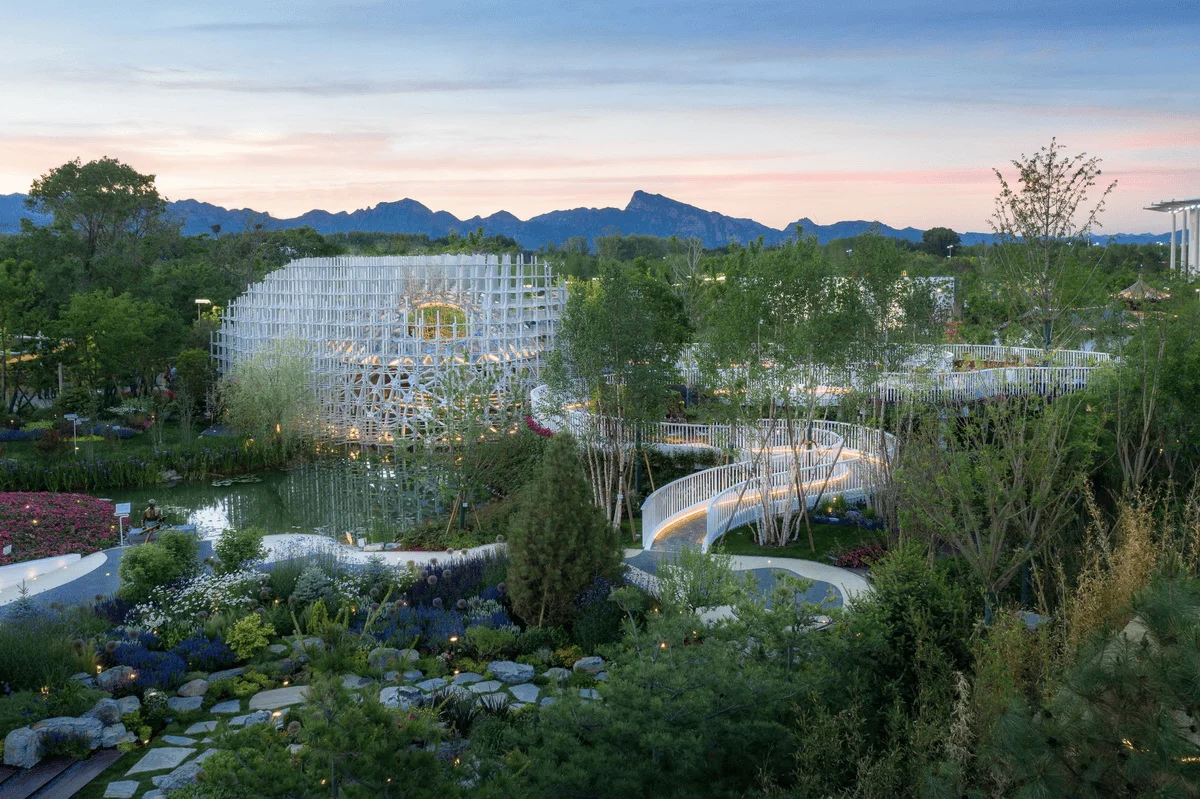The Xihoudu site, located at the junction of Shanxi, Shaanxi, and Henan provinces in Fenglingdu Town, Ruicheng County, Shanxi Province, is one of the most important archaeological sites of prehistoric human activities in the world. It is also a national key cultural relics protection unit. The site discovered the earliest remains of human use of fire 60 years ago, dating back about 1.8 million years.
In 2019, Shanxi Province hosted the second National Youth Games and required the transformation of the existing torch square on the “Human Knot Ridge” of Xihoudu to host the torch collection ceremony. The design challenge was that the existing fire-taking platform, lighting platform, and square facilities could not be demolished. The solution was to integrate the torch square and the surrounding environment into one using earth landscape techniques to create a magical, spiritual, and philosophical place, reinterpreting the unity of man and nature in this unique location with contemporary design.
The torch square is closely related to the original relic exhibition hall and the village. The very short construction period and the harsh cold conditions forced the creative use of GRC materials that imitate local soil. The materials were based on the local loess as a benchmark sample and used precious stone art imitation soil decorative concrete to coordinate the natural relationship between the cultural relics and the environment.
The newly planned Torch Park for the Second National Youth Games in 2019 at the Xihoudu ancient human site uses three consecutive narratives: “The Discovery of Fire,” “The Ritual of Fire,” and “The Taming of Fire” to imbue Human Knot Ridge with new cultural and natural experiences.
The visit starts at the original relic exhibition hall. Visitors climb up to the mountaintop experience exhibition hall on the hillside, where a long mountain cave separates them from the modern scene and takes them into a primitive and simple realm. The original fire-taking platform is preserved in structure and redesigned in appearance, enveloped in the mountain cave, where light creates a mysterious atmosphere.
“The discovery of fire” is a declaration of human civilization that opened up the world. The “One Line Sky” cut by the axe of God signifies the complete separation of humans as fire thieves from animals. By calculating the angle of the sun’s altitude and the axis of the building, the angle of the sun’s light coincides with the “One Line Sky” at the moment the torch is lit for the Second National Youth Games torch collection.
Fire allowed humans to move from the open air into caves, and sound changed from shouting to whispering and mumbling. A sound device was designed based on the prototype of the xun, allowing the sound chamber to connect the inside and outside of the cave. The sound field connects the sky and the earth, becoming a place and container for people to speak.
The stands in the “Ritual of Fire” square use large sandstone blocks removed from the original torch square. They borrow from the surrounding topographic features and surround the original red lighting platform, forming layers of viewing platforms for viewing the surrounding scenery. It is also the best spot to view the “Mount Tai and the River” (‘Mount Tai’ refers to Mount Hua, ‘River’ refers to the Yellow River).
The project also reclaimed the construction waste landfill site on the west side from the 2016 project, using gully forms to minimize engineering input. This restored the natural landscape and created a maze-like path, symbolizing the difficult journey of civilization in the history of “taming fire” for mankind.
This will be the future open-air museum. At the end of the alleyway on the north side, five viewing platforms naturally form, overlooking the majestic Loess Plateau, experiencing the rugged archaeological site, and admiring the beautiful pepper tree forest.
The redesigned torch square is simple and natural, filled with mystery. It takes visitors back to the primitive scene and allows them to experience the most magnificent section of the Yellow River and one of the most influential archaeological sites in the world. At the same time, as the torch collection site for the Second National Youth Games, it leaves a memorable page in the history of contemporary sports in China.
Project Information:
Project Type: Landscape Architecture
Project Location: Ruicheng County, China
Architect: URBANUS
Area: 980m²
Project Year: 2019
Photographer: Tianpei Zeng, Baiqiang Cao
Lead Architect: Wang Hui
Project Initiation: Li Yali
Design Team: Wang Kun, Li Yongcai, Wang Lei, Gao Zixu
Art Consultant: Mou Sen | Ma Yuanchi, Mei Yuezi
Structural Design: HJI/Hejie Consultants | Li Yongming, Zhao Yanguo
Construction Company: Shanxi Xijian Group Co., Ltd. (General Contractor), Beijing Baoguishyi Technology Co., Ltd. (Face Material), Beijing Huayun Landscape Engineering Co., Ltd. (Interior Face Construction)
Construction Unit: Ruicheng County Government


